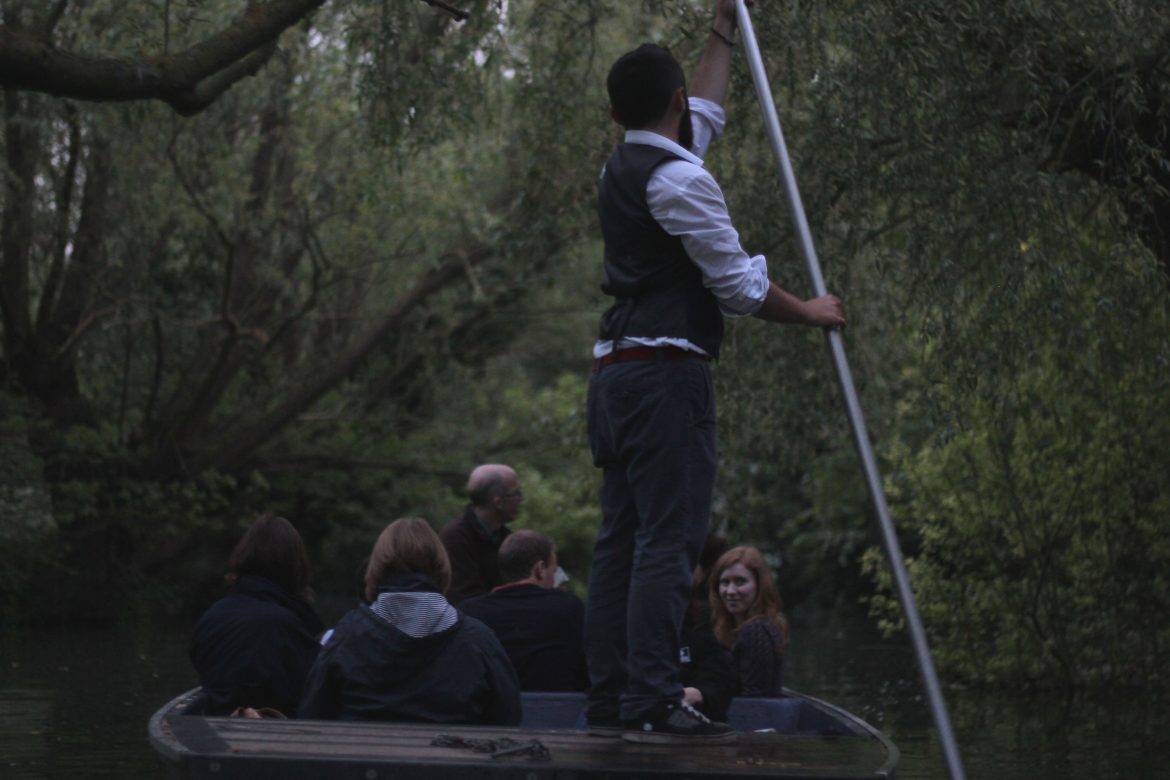The River Cam at night is quite a different place to the vision of punts, boater hats and bright young things lounging on sunlit banks we know so well. Once the tourists have dispersed and the students have retreated to the bars and colleges, the waterway comes alive with a thousand secret voices, quivers and shadows.
It’s into this hidden kingdom that we’re drifting now, on a Bat Safari Punt Tour, organised by the Wildlife Trusts and Scudamore’s. It’s dusk, and all around us bats and other creatures of the night are poised to begin their nocturnal activities.
On board, our resident ‘bat man’ Iain Webb preps us for what we’re likely to see – mostly female pipistrelles hunting flies and midges – and introduces us to our individual bat detectors, which will enable us to hear these winged enigmas as they pass overhead.
Soon we’ve left the city, floating gently towards Grantchester Meadows. As the last of the light leaves the sky, we get our first flicker on the readers – unfortunately it’s my phone interfering with the signal… But the next crackle is for real: a series of throaty clicks, accompanied by a quick, hectic silhouette in the sky.
Iain proves a fount of interesting information, pointing out the low-flying Daubenton’s bats (or ‘water bats’), which skim the river’s surface, and dispelling myths about bats getting in people’s hair (their echolocation is so sophisticated they can detect objects as fine as a single human hair).
The largest bat in the world is the gold-crowned fruit bat, with a wingspan of up to 6ft. The smallest is the bumblebee bat, coming in at just 30mm (2g)
I often look for bats when I’m out in the evenings, but I’d no idea there were so many different species: 18 in Britain alone, 12 of which have been recorded in Cambridgeshire. The most common of these are the pipistrelle, soprano pipistrelle, the Daubenton’s and the Natterer’s bat. Less common but a treat to see, says Iain, is the brown long-eared bat, which can be found hovering above clouds of insects, and it’s a lucky person indeed that spots a mouse-eared bat, a species of which, in the UK, only a single individual remains.
Though bat populations have slowly increased over the last decade, there are considerably fewer than there were in Britain 50 or 100 years ago. Encouraging them back into our cities is easy though – just an area of uncut grass in your garden or a pond of any size will attract the insects bats feed on.
July is probably the best time for bat-watching: by then, the babies born in spring will have weaned and be flying in tandem with their mothers as they learn how to catch insects. It’s enchanting gliding down the river in the dark, picking out the bats in the torchlight. This route to Grantchester is the leafiest, wildest stretch of the river, where trees bow low to the water and tower overhead, creating an ancient, jungly feel, helped by the mysterious sounds that punctuate the gloom.
As well as bats, we watch a family of herons settle down for the night high in an ash tree, hear the occasional plop of a fish surfacing beside us and listen as a tawny owl calls in the distance.
This may be Cambridge at its most enchanting.
Bat Punt Safaris run from 15 May 2015 until September. Further details online.

